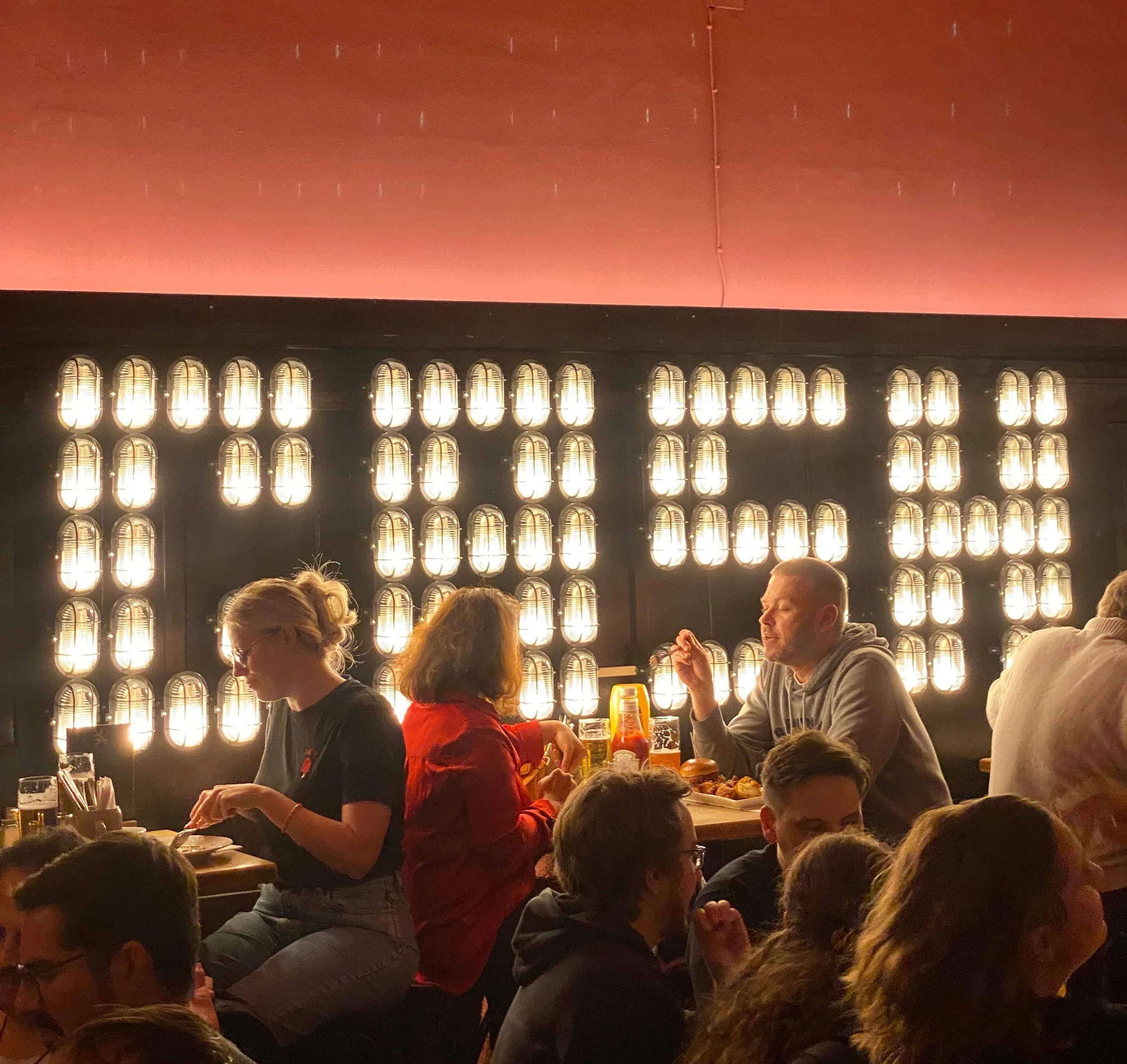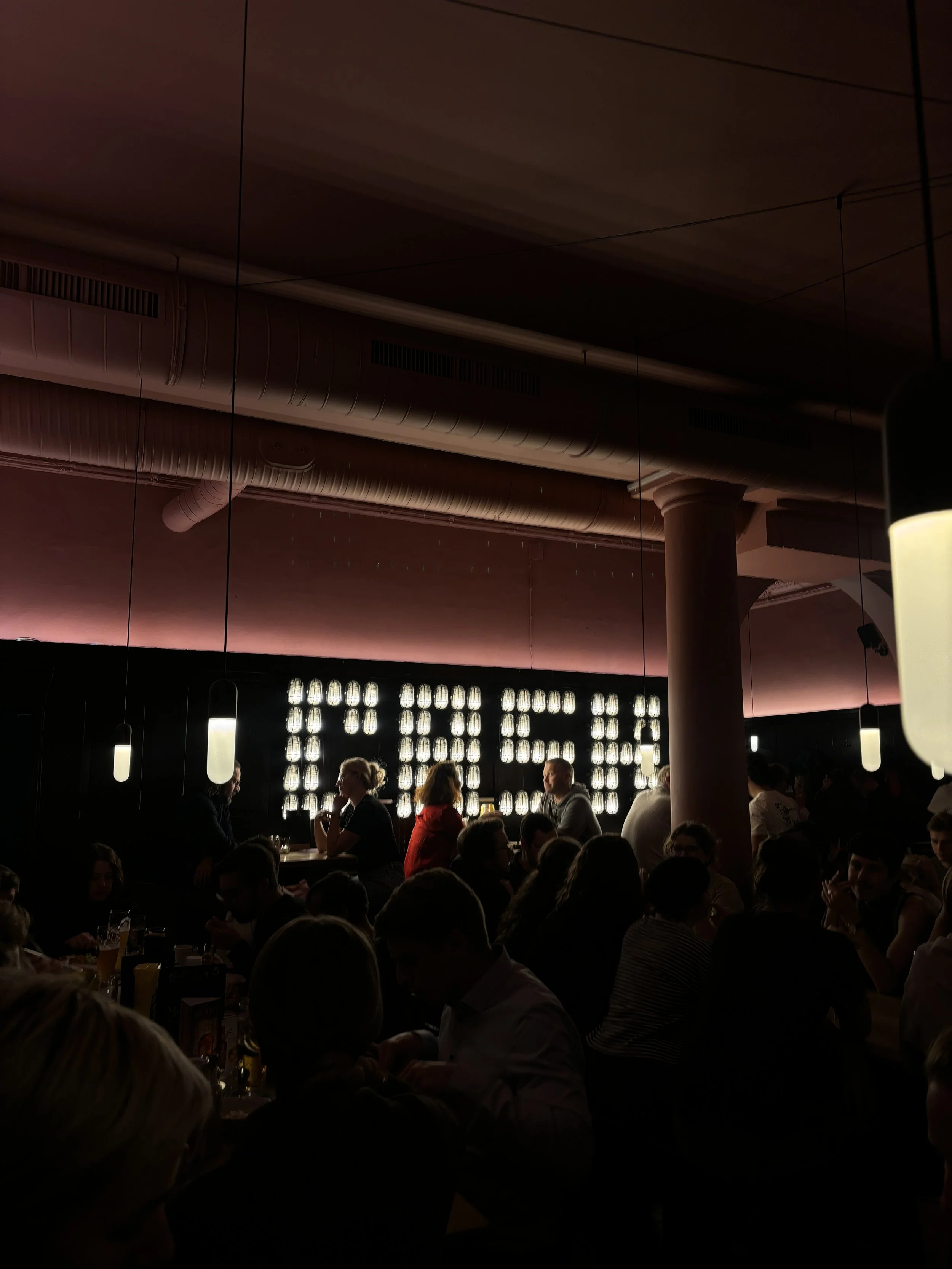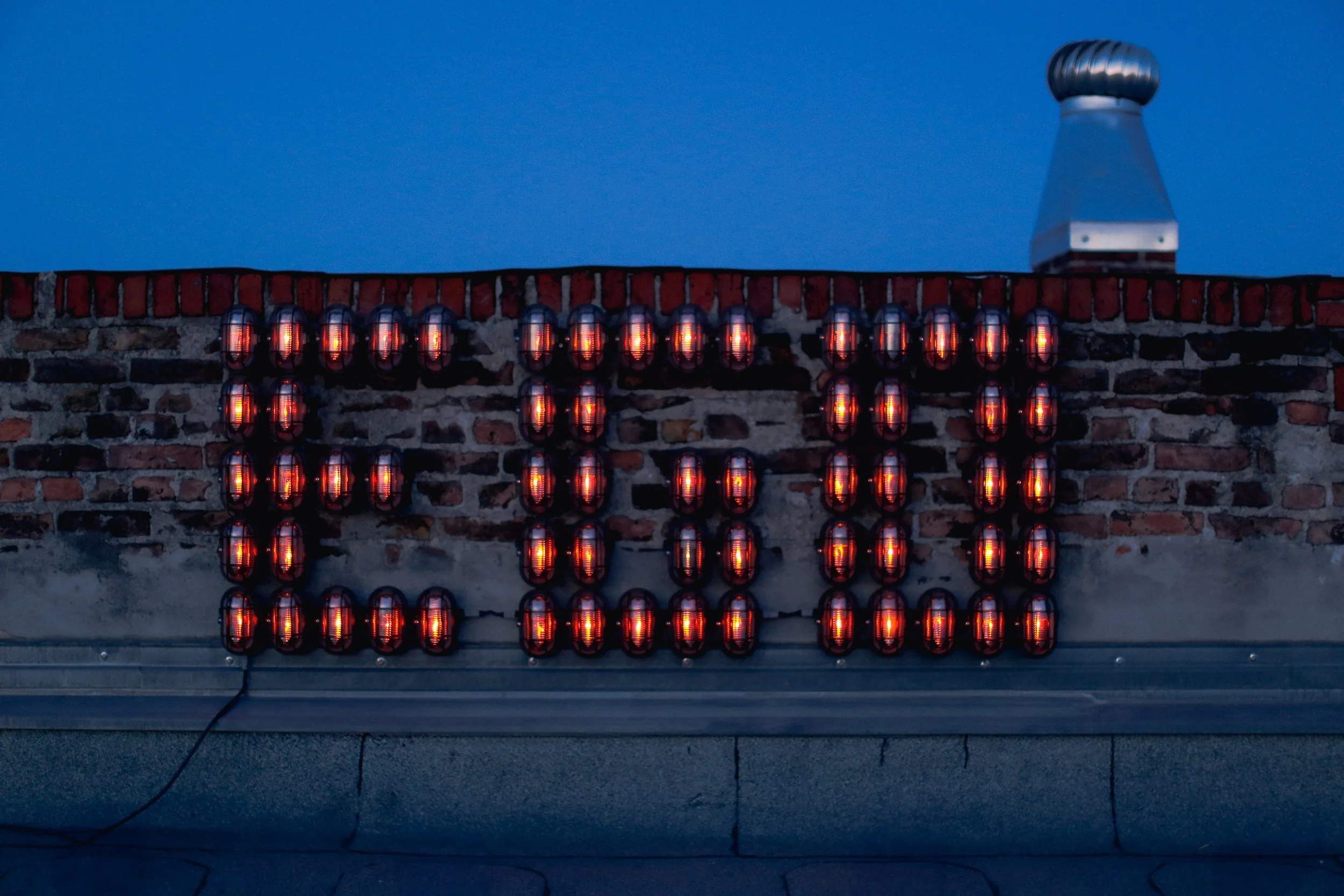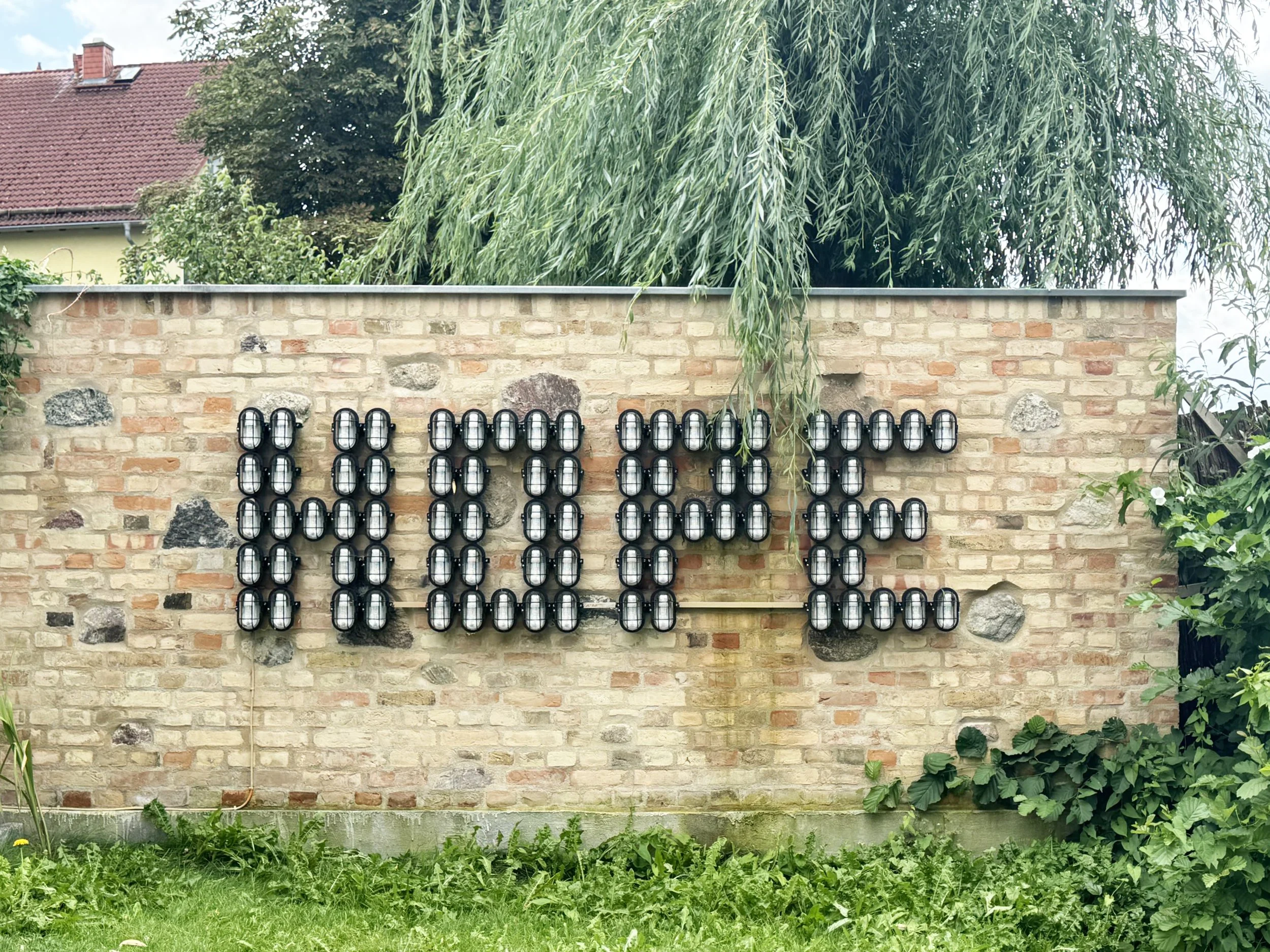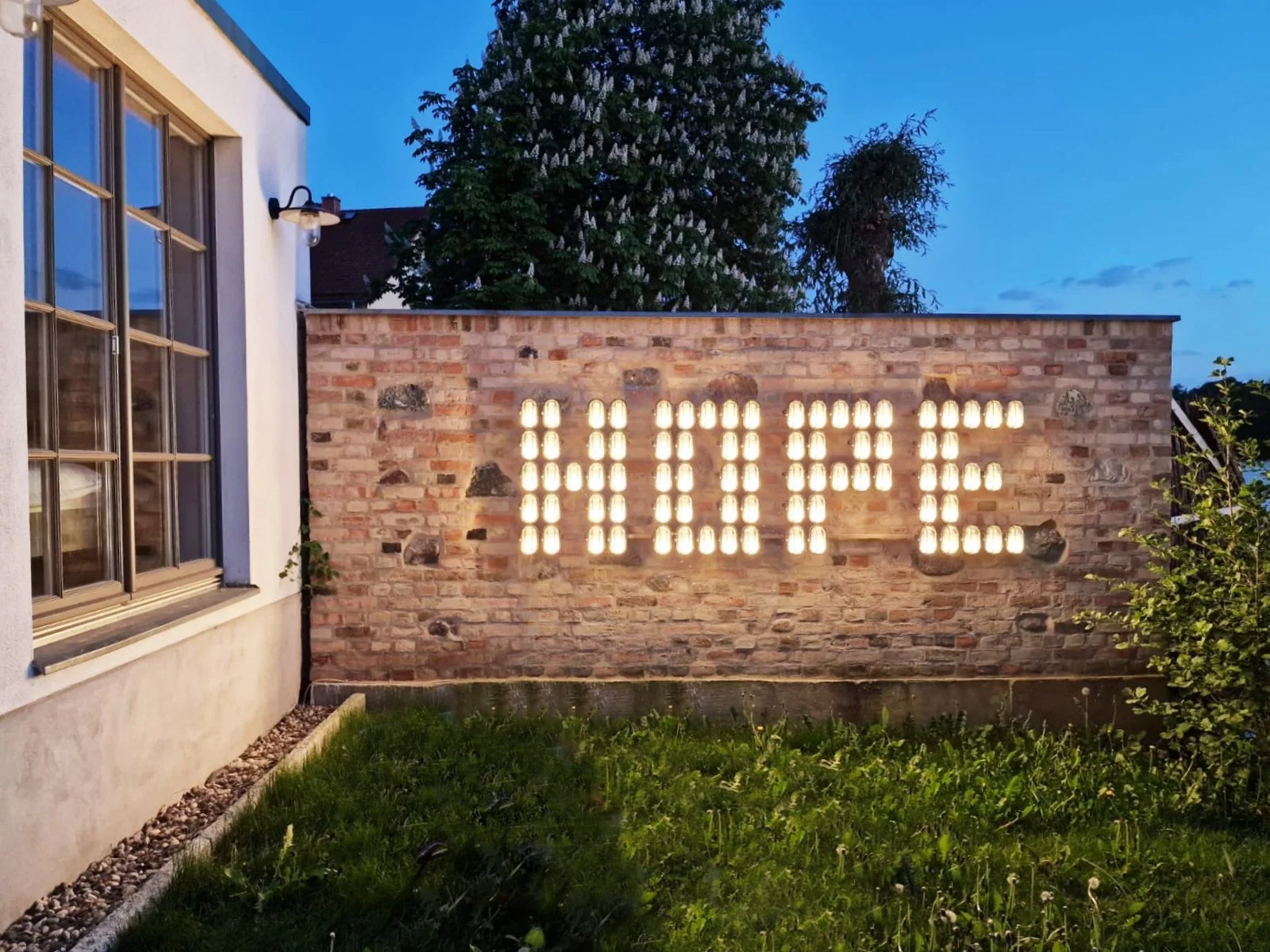( für J. )
aluminium, oval lights, electrics
90 × 400 × 15 cm
@ Matthias Bildstein
dedicated to the numerous companies that I stole material from to make this work possible
aluminium, oval lights, electrics
90 × 455 × 15 cm
@ Katharina Jaeger
Buzzwords encapsulate and reflect the zeitgeist in a concise and pointed manner — translating them into objects that deliver statements as clear as they are provocative.
The light sculpture WATERS is composed of industrial lights, arranged like pixels within a fixed grid to form an illuminated word.
The glowing letters light up the room — yet two of the six characters, the ‘T’ and the ‘E,’ flicker and appear to burn, leaving the remaining letters to spell out WARS.
The piece plays with the duality of the terms. While waters translates to water or bodies of water, wars signifies conflict, drawing attention to the planet’s increasingly scarce resources, particularly drinking water. This theme is further amplified by the geopolitical tensions surrounding newly accessible oceanic areas in the Arctic, which are becoming available due to climate change. The race for these regions, involving powers such as Russia, China, and the United States, reflects the relentless competition for dominance and resources.
The work sheds light on an era in which the influence of wealthy, old, white men and the power of money threaten to undermine democratic principles. Yet, just as the installed lights will eventually burn out, the piece also hints at hope: the possibility of an end to these inequities and the renewal of societal structures. WATERS thus becomes a monument — somber, but not without a glimmer of optimism.
aluminium, oval lights, electrics
90 × 290 × 15 cm
@ Lukas Troberg
A critical light on the power and influence of money in our society. The term “cash”, an everyday, almost casual synonym for money, is used here to represent the influence of financial power, which not only steers the market, but increasingly also democratic processes and public opinion.
In times when individuals worth billions, such as Elon Musk or Peter Thiel, use their economic position to gain political influence and even occupy government offices, the connection between wealth and power becomes more tangible than ever before.
Buzzwords are used as terms that reflect current events in a condensed and pointed way. Transformed into conspicuous, luminous objects, their statements are as clear as provocative.
‘CASH’ takes up this idea in order to shed light on the ruthlessly advancing intertwining of capital and power.
But the piece also points to a transience: just as the lights of the sculpture will burn out at some point, the era of this overpowering elite – mostly white, old and male – could also come to an end. In this way, ‘CASH’ not only reminds us of the omnipresent power of money, but also captures the faint hope of change.
aluminium, oval lights, electrics
90 × 214 × 15 cm
@ Lilly Wetzel
Instead of emitting steady brightness, the fixtures contain flickering LED “candles.” The light is unstable, nearly extinguished. What remains is the impression of a fire that once burned fiercely – now reduced to a fading glow.
The piece alludes to the fragility of the male ego: a self-image under strain – culturally inflated, socially eroding, internally depleted. The flickering light points to a crumbling sense of power, to identities clinging to outdated ideals that have long lost their brilliance.
Despite its drama, EGO offers no triumph – only a quiet reflection. Not destruction, but a mirror: a moment suspended between arrogance and exhaustion – fleeting, vulnerable, revealing.
aluminium, oval lights, electrics
90 × 290 × 15 cm
@ Lukas Troberg
HOPE transforms a defining keyword of our time into a light sculpture. Here, hope does not appear as a romantic ideal, but as a political necessity – in the face of growing social inequality, escalating climate crises, and shifting global power structures.
The work poses the question of whether hope remains viable at all – or whether it has long since become an empty phrase, co-opted by political campaigns, brand messaging, and greenwashing. Yet HOPE resists cynicism. The glowing object insists: hope is not a state of being, but a decision – uncomfortable, active, defiant.
At the same time, impermanence remains present: the light may flicker, may go out – and still be reignited. And within this transience lies a possibility: hope as something that must be continually recreated – collectively, through conflict, with realism.
Between resignation and resistance, it illuminates a sense of possibility: hope as a stance, not an escape.



